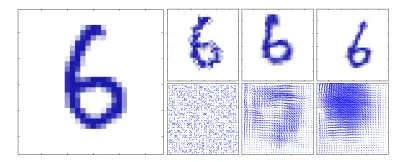172 words
1 minutes
[CS5242] Regularization
Regularization
- modification intended to reduce generalization (validation) error but not training error
- reduce variance significantly while not overly increase bias
Parameter Norm Penalties
- add penalty to regularize
- prevent overfitting
- L1 norm regularization:
- L2 norm regularization:
Parameter sharing
- force the set of parameter to be equal
- only a subset of the parmeters need to be stored in memory
- e.g CNN
Dropout
- Training: randomly set some neurons to with probability
- can be different each iteration
- computational cheap
- hidden layer must perform well regardless of other hidden units
Data augmentation
- synthesize data by transforming the original dataset
- incorporate invariances
- e.g

Injecting noise
- add noise to simulate real-world situation
- Input: train with noise injected data
- Hidden units: noise inject to hidden layers
- Weights: increase stability for learned functions and parameters. -e.g RNN
Batch normalization (BN)
- reduces internal covariate shift by normalizaing inputs of each layer
- normalize → scale and shift
: average, : standard deviation
: scale, : shift- and are parameters to learn

[CS5242] Regularization
https://itsjeremyhsieh.github.io/posts/cs5242-5-regulatization/